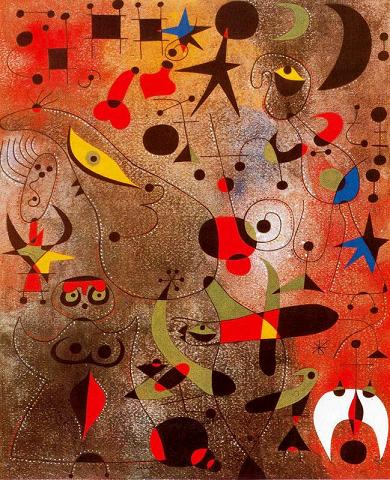jordi
ripoll missé
Understanding science is important for society. If the goal is simply to find out, practical benefits often come later.

Research activities
Research Interests:
I'm a
mathematical biologist. I'm interested in the modelling of
structured population dynamics, on the one hand, existence
and uniqueness of solutions, steady states analysis and
(in)stability analysis, bifurcation of parameters and
the existence of periodic solutions, and numerical
simulations. On the other hand, the biological
evolution of some (finite or infinite dimensional) traits of
the populations through the adaptive dynamics and the
computation of the evolutionarily stable strategies (ESS).
We are also interested in the approach of complex networks to deal with the spatial heterogeneity in a suitable way or to encompass the social/contact structure within a population. Epidemic spread in heterogeneous metapopulations and telecommunication networks.
Lately, we focus on the computation of the Basic reproduction number in continuously structured population dynamics. Ecological and epidemiological models. Numerical and analytical approach.
MathMods IP 2009 - Mathematical Models in Life and Social Sciences - Lifelong Learning Programme. Course on Structured Population Dynamics in ecology and epidemiology, for Master students and PhD students. Course description. Course Slides.
Updated list of publications by J. Ripoll at SCOPUS.
Or at Google
Scholar.
Numerical approach to the Basic Reproduction Number (R_0) in periodic environments.
Recent presentations:
A discrete model for the
evolution of infection prior to symptom
onset. Slides.
Numerical approach to an
age-structured Lotka-Volterra model. Slides.
- Epidemics and density-dependent
diffusion on heterogeneous metapopulations.
European Conference on Mathematical and Theoretical
Biology (ECMTB14), Gothenburg, Sweden, June 15 – 19, 2014.
- Epidemic survivability:
characterizing networks under epidemic-like failure
propagation scenarios. DRCN 2013, Budapest,
Hungary, March 4 - 7, 2013. Nominated for best paper
award.
- Propagación de epidemias sobre
redes complejas. II Encuentro Conjunto RSME-SMM,
Torremolinos, Málaga, Spain, January 17-20, 2012.
- Two approaches to epidemic network
models. Workshop on Mathematical Innovative
Methods and Models Of BIOsciences (MIMMO-BIO, dedicated to
Mimmo Iannelli), 19 -- 21 December 2011, Trento (Italy).
- An epidemic model on computer
networks. European Conference
on Mathematical and Theoretical Biology (ECMTB11), Kraków,
Poland, June 28 - July 2, 2011. Mini-symposium:
Epidemiology, Eco-Epidemiology and Evolution.
- Epidemics and Diffusion on Complex Networks. CMPD3 Conference on Computational and Mathematical Population Dynamics, May 31 - June 4 2010, Bordeaux, France.
- Monte Carlo simulations of a SIS-diffusion model in heterogeneous metapopulations. AIP Conference Proceedings 1168 of the 7th International Conference on Numerical Analysis and Applied Mathematics (ICNAAM 2009), 18-22 September 2009, Rethymno, Crete (Greece), Vol. II, pp.1569-1572. ISBN: 978-0-7354-0709-1.
- Equilibria and simulations in a metapopulation model for the spread of infectious diseases. Proceedings of the 9th International Conference on Computational and Mathematical Methods in Science and Engineering (CMMSE 2009), 30th June - 3rd July 2009, Gijón (Spain), Vol. II, pp.600-607. ISBN: 978-84-612-9727-6.
- Optimal latent period in a bacteriophage model structured by infection age, Workshop on Analysis and Numerics of Population dynamics and Epidemics models WANPE08, CISM, Udine, Italy, December 15-17, 2008.
- Estudio del perfil asintótico en un modelo no lineal de poblaciones, NoLineal 2008, Barcelona, Spain, June 16-19, 2008.
- Evolution of the age(or size)-dependent sex-reversal under adaptive dynamics, Workshop on Size-structured Population Models, Umeå University, Umeå, Sweden, October 17-19, 2007. Invited speaker.
- The ultimate age-profile in an asymptotically linear population model, Conference on Computational and Mathematical Population Dynamics CMPD2, Campinas, Brazil, July 16-20, 2007.
- Adaptive dynamics of a function-valued trait describing the transition in a sequential hermaphrodite population, AIMS Conference, Poitiers, France, June 25-28, 2006. Contributed Session: Modelling and Math Biology.
- Linearized stability for non-linear evolution equations involving accretive operators: an application to population dynamics , European Conference for Mathematical and Theoretical Biology (ECMTB05), Dresden, Germany, July 18-22, 2005. [Poster]
- Principio de estabilidad lineal para ecuaciones casi-lineales de dinámica de poblaciones estructuradas, 1r Congreso Conjunto de Matemáticas RSME-SCM-SEIO-SEMA, MAT.ES 2005, Valencia, Spain, January 31 and February 1-4, 2005.
- Usos docents del Projecte ACME i experiències dutes a terme, 3er CI:"DUI" Congrés Internacional Docència Universitària i Innovació, Girona, Spain, June 30 and July 1-2, 2004.
- Function valued evolutionary traits in structured population dynamics, Conference on Computational and Mathematical Population Dynamics CMPD, Trento, Italy, June 21-25, 2004.
- Estudio de la estabilidad en un modelo no lineal de dinámica de poblaciones estructuradas, NoLineal 2004, Toledo, Spain, June 1-4, 2004.
- Evolution of sequential hermaphroditism in a structured population model, AICME 2003 Alcalá 2nd International Conference on Mathematical Ecology, Alcalá de Henares, Spain, September 5-9, 2003.
- ACME 2.0, un sistema de evaluación continuada y ayuda a la resolución de problemas, XI Congreso de Innovación Educativa en las Enseñanzas Técnicas, Vilanova i la Geltrú, Spain, July 23-25, 2003. ISBN: 84-688-2216-7.
- A tool for the continuous assessment and improvement of the student's skills in a mathematics course, TICE 2002 Technologies de l'Information et de la Communication dans les Enseignements d'ingénieurs et dans l'industrie, Lyon, France, November 13-15, 2002.
- Optimal transitions in a general discrete stage-structured population model, Conference on Mathematical Modelling of Population Dynamics, Bedlewo, Poland, June 24-28, 2002.
- Un modelo depredador-presa estructurado por la edad con presencia de canibalismo. XVII CEDYA-VII CMA, Salamanca, Spain, September 24-29, 2001. ISBN: 84-699-6144-6.
- Proyecto ACME. IX Congreso de Innovación Educativa en las Enseñanzas Técnicas, Vigo, Spain, July 23-27, 2001. ISBN: 84-699-5659-0.
- Cálculo de toros invariantes alrededor de órbitas periódicas Halo, XVI CEDYA-VI CMA, Las Palmas de Gran Canaria, Spain, September 21-24, 1999. ISBN: 84-95286-17-3.
E. Barrabés, D. Juher, J. Poch, J. Ripoll, J. Soler: La innovació docent a la Universitat de Girona, pàg. 69-79, Servei de Publicacions de la UdG, Girona 2003. ISBN: 84-8458-183-7.
Scenarios of diffusion and control of influenza pandemic in Italy/Scenari di diffusione e controllo di una pandemia influenzale in Italia. EPICO Working Group: M. L. Ciofi degli Atti, C. Rizzo, A. Bella, M. Massari, M. Iannelli, A. Lunelli, A. Pugliese, J. Ripoll, P. Manfredi, G. Scalia Tomba, S. Merler, G. Jurman, C. Furlanello. Istituto Superiore di Sanità 2006, 41 pages. Rapporti ISTISAN 06/33 (in Italian). ISSN 1123-3117. Roma, Italy.
[2] H. R. Thieme. Mathematics in population biology. Princeton Series in Theoretical and Computational Biology. Princeton University Press, Princeton, NJ, 2003.
[3] M. Iannelli and A. Pugliese. An Introduction to Mathematical Population Dynamics. Along the trail of Volterra and Lotka, Springer, New York, 2014.
[4] G. F. Webb. Theory of nonlinear age-dependent population dynamics, volume 89 of Monographs and Textbooks in Pure and Applied Mathematics. Marcel Dekker Inc., New York, 1985.
[5] O. Diekmann, S. A. van Gils, S. M. Verduyn Lunel, and H.-O. Walther. Delay equations, volume 110 of Applied Mathematical Sciences. Springer-Verlag, New York, 1995.
[6] R. Rudnicki, editor. Mathematical modelling of population dynamics, volume 63 of Banach Center Publications. Polish Academy of Sciences Institute of Mathematics, Warsaw, 2004.
[7] U. Dieckmann, J. A. J. Metz, M. W. Sabelis, and K. Sigmund, editors. Adaptive Dynamics of Infectious Diseases. In Pursuit of Virulence Management, volume 2 of Cambridge Studies in Adaptive Dynamics. IIASA, Laxenburg, 2002.
[8] O. Diekmann, J.A.P. Heesterbeek and T. Britton. Mathematical Tools for Understanding Infectious Disease Dynamics. Princeton, N.J: Princeton University Press, 2013.
[9] F. Brauer and C. Castillo-Chávez. Mathematical models in population biology and epidemiology. Texts in applied mathematics 40. Springer-Verlag, New York, 2nd ed. 2012.
[10] B. Perthame. Transport Equations in Biology. Birkhäuser Verlag, Basel, 2007.
[11] J.M. Cushing. An Introduction to Structured Population Dynamics, CBMS-NSF regional conference series in applied mathematics 71, SIAM, Philadelphia, 1998.
[12] H. Caswell. Matrix population models : construction, analysis, and intepretation, Sunderland (Mass.), Sinauer Associates, 2001.








